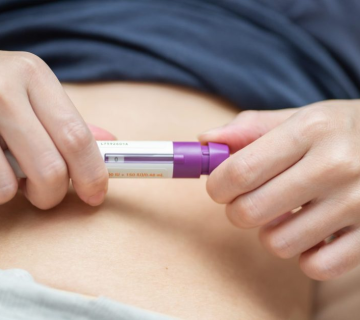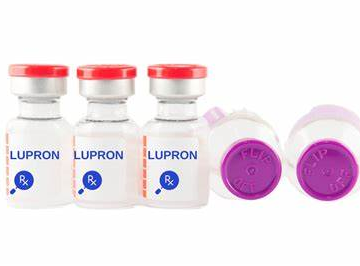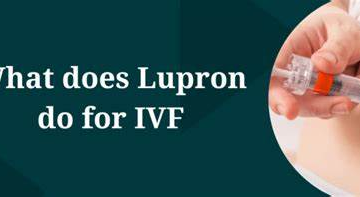
Navigating IVF with Polycystic Ovaries: Your Ultimate Guide
If you’ve been diagnosed with Polycystic Ovarian Syndrome (PCOS) and are dreaming of starting a family, you might feel overwhelmed or unsure where to begin. You’re not alone—millions of women face this same challenge every day. One powerful option to help you achieve that dream is In Vitro Fertilization, or IVF. This guide is here to walk you through everything you need to know about PCOS and IVF in a way that’s easy to understand, supportive, and packed with the latest info.
We’ll cover what PCOS is, how it affects your ability to get pregnant, and why IVF could be your key to parenthood. You’ll get a step-by-step look at the IVF process tailored for women with PCOS, plus success rates, risks, and practical tips to boost your chances. We’ll even dive into cutting-edge research and real-life stories to give you hope and fresh insights you won’t find everywhere else. By the end, you’ll feel more confident and ready to take on this journey—plus, there’s a fun interactive section waiting for you!
Let’s start with the basics and build from there.
Understanding Polycystic Ovaries
What Are Polycystic Ovaries?
Polycystic Ovarian Syndrome, often just called PCOS, is a condition where your ovaries develop lots of tiny, harmless sacs called cysts. These aren’t dangerous like other kinds of cysts, but they can mess with your hormones. Imagine your ovaries as a pair of busy factories—normally, they release one egg each month like clockwork. With PCOS, those factories get a little confused, producing extra hormones and sometimes not releasing eggs at all.
PCOS affects about 1 in 10 women of childbearing age, making it super common. It’s tied to a mix of things like your genes (if your mom or sister has it, you might too) and how your body handles hormones like insulin.
Symptoms You Might Notice
PCOS shows up differently for everyone, but here are some signs you might spot:
-
- Irregular periods: Your cycle might skip months or be unpredictable.
-
- Extra hair: You could see more hair on your face, chest, or back—doctors call this hirsutism.
-
- Acne or oily skin: Breakouts that won’t quit, even past your teen years.
-
- Weight gain: Especially around your middle, which can be tough to shake.
-
- Thinning hair: Losing more hair from your scalp than usual.
-
- Dark skin patches: Velvety spots on your neck or underarms.
You don’t need all these symptoms to have PCOS—just a couple could mean it’s worth checking with a doctor.
What Causes PCOS?
Scientists are still piecing this puzzle together, but here’s what we know:
-
- Hormone mix-up: Your body might make too many androgens (think of them as “male” hormones) or struggle with insulin, which helps control blood sugar.
-
- Family ties: If PCOS runs in your family, your odds go up.
-
- Inflammation: Some research points to low-level inflammation stirring things up.
A 2022 study in The Journal of Clinical Endocrinology & Metabolism found that insulin resistance affects up to 70% of women with PCOS, throwing their hormones out of whack. Lifestyle stuff—like eating lots of sugary foods or not moving much—can make it worse, but the good news? You can fight back with smart changes.
✔️ Quick tip: Keep a symptom diary for a month—track your periods, skin changes, or anything unusual. It’ll help your doctor figure out if PCOS is the culprit.
How Polycystic Ovaries Affect Your Fertility
Trouble with Ovulation
Here’s the biggie: PCOS often stops your ovaries from releasing eggs regularly. Normally, ovulation is like a monthly alarm clock—ding! An egg’s ready. But with PCOS, that alarm might not ring, or it rings at random times. This is called anovulation, and it’s why getting pregnant naturally can be tricky.
Without an egg, there’s nothing for sperm to meet, so conception hits a wall. Even when ovulation happens, the extra hormones might make it harder for an egg to settle into your uterus.
Other Fertility Hurdles
PCOS doesn’t stop at anovulation. It can also:
-
- Mess with egg quality: Eggs might not grow as strong or healthy as they should.
-
- Thicken ovary walls: Making it tough for eggs to break free.
-
- Change your uterus lining: The endometrium (your womb’s cozy blanket) might not thicken enough for an embryo to snuggle in.
A 2021 study from Fertility and Sterility showed that women with PCOS have a 20-30% lower chance of natural conception compared to women without it. That sounds scary, but don’t lose hope—treatments like IVF can level the playing field.
❌ Heads-up: Don’t assume you can’t get pregnant at all with PCOS—some women still ovulate occasionally, so birth control might still be needed if you’re not ready for a baby.
What Is IVF and Why It Helps
IVF Explained Simply
In Vitro Fertilization (IVF) is like a science superpower for making babies. “In vitro” means “in glass,” so picture this: doctors take eggs from your ovaries, mix them with sperm in a lab dish, and grow tiny embryos. Then, they place one or two back into your uterus to grow into a baby.
It’s a multi-step process—think of it as a recipe with a few stages—but it’s designed to bypass PCOS problems like irregular ovulation. For many women, it’s the golden ticket when simpler treatments don’t work.
Why IVF Fits PCOS
IVF isn’t the first stop for PCOS-related infertility. Doctors usually try easier fixes first, like:
-
- Pills to kickstart ovulation: Drugs like clomiphene or letrozole.
-
- Insulin helpers: Metformin to balance blood sugar.
But if those don’t do the trick—or if time’s ticking, or there’s another issue like a partner’s low sperm count—IVF steps in. For PCOS, it’s extra helpful because:
-
- It controls egg production (no waiting for your ovaries to cooperate).
-
- It lets doctors pick the best eggs and embryos.
-
- It skips ovulation glitches entirely.
“IVF can be a game-changer for women with polycystic ovaries,” says Orion Nightingale, a fertility expert. “It gives us a way to work around the condition’s chaos and focus on what matters—healthy embryos.”
✔️ Ask this: “Is IVF right for me yet, or should I try other options first?” Your doctor can map out your best path.
The IVF Process for Women with Polycystic Ovaries
IVF might sound intimidating, but breaking it into steps makes it less of a mystery. Since PCOS changes how your body reacts, here’s what to expect, tailored just for you.
Step 1: Waking Up Your Ovaries
First up is ovarian stimulation. Normally, you’d release one egg a month, but IVF needs more to boost your odds. You’ll take hormone shots for about 10-12 days to nudge your ovaries into making several eggs at once.
PCOS twist: Your ovaries might be eager beavers, producing lots of eggs—sometimes too many. That’s great for options but risky for a condition called Ovarian Hyperstimulation Syndrome (OHSS). Your doctor will watch you like a hawk with ultrasounds and blood tests.
✔️ Pro tip: Ask about “mild stimulation” protocols—they use gentler doses to keep OHSS at bay.
Step 2: Collecting the Eggs
When your eggs are ripe, it’s time for egg retrieval. You’ll be snoozing under light anesthesia while a doctor uses a tiny needle (guided by ultrasound) to scoop eggs from your ovaries through your vagina. It takes about 20 minutes.
PCOS twist: More eggs could mean a longer retrieval, but also more chances for embryos. A 2023 study in Human Reproduction found PCOS patients often get 15-20 eggs per cycle, compared to 8-12 for others.
❌ Watch out: Overdoing it could trigger OHSS—your doctor might freeze extra eggs to avoid that.
Step 3: Making Embryos
In the lab, your eggs meet sperm. This can happen two ways:
-
- Traditional IVF: Eggs and sperm mingle in a dish.
-
- ICSI: A scientist injects one sperm into each egg (handy if sperm quality’s low).
The fertilized eggs grow into embryos over 3-5 days, watched closely for quality.
PCOS twist: Some research hints that PCOS eggs might fertilize a bit less often, but it’s not a dealbreaker—success rates stay strong.
Step 4: Placing Embryos in Your Uterus
Finally, embryo transfer! A doctor slides a thin tube through your cervix to place one or two embryos into your uterus. No anesthesia needed—it’s quick, like a checkup. Then, you wait two weeks for a pregnancy test.
PCOS twist: Your uterus lining might need extra love (like progesterone shots) to welcome the embryo, thanks to those hormone hiccups.
✔️ Question: “How many embryos should we transfer?” One lowers multiple-birth risks; two ups your pregnancy odds—talk it over.
How Often Does IVF Work with PCOS?
What the Numbers Say
Success is the golden question! Good news: women with PCOS often do as well—or better—with IVF than others. Why? Those extra eggs give you more shots at a great embryo.
The Society for Assisted Reproductive Technology (SART) says women under 35 have a 40-45% chance of a live birth per IVF cycle. For PCOS patients, some studies nudge that up to 50%, thanks to higher egg counts. But it’s not a sure thing—here’s what influences it.
Age Matters Most
Your age is the biggest player:
-
- Under 35: 40-50% success per cycle.
-
- 35-37: 30-40%.
-
- 38-40: 20-30%.
-
- Over 40: 10-15%.
PCOS doesn’t change this age curve much, but starting younger still gives you the best shot.
Other Things That Tip the Scales
-
- Weight: A BMI over 30 can drop success by 10-15%. Losing even a little helps big-time.
-
- Lifestyle: Smoking cuts your odds by 20%; stress and poor diet don’t help either.
-
- Egg quality: PCOS might make eggs trickier to perfect, but quantity often balances that out.
✔️ Boost your odds: Cut out soda and add a daily walk—small swaps, big wins.
Risks to Know About
IVF isn’t risk-free, and PCOS adds a few twists. Here’s what to watch for.
Ovarian Hyperstimulation Syndrome (OHSS)
OHSS happens when your ovaries overreact to stimulation hormones, swelling up and leaking fluid. It’s more common with PCOS—up to 10% of cycles, says a 2022 Reproductive Biology report.
Signs include:
-
- Bloating that won’t quit.
-
- Belly pain.
-
- Feeling sick or gaining weight fast.
Most cases are mild and fade with rest, but severe OHSS (rare, under 1%) needs medical help. Doctors dodge it by tweaking your meds or freezing embryos.
✔️ Prevention: A “trigger shot” called GnRH agonist (not hCG) slashes OHSS risk.
Twins or More
Transferring multiple embryos ups your chance of multiples—twins happen in 20-30% of IVF pregnancies. Fun fact: PCOS doesn’t make this risk higher, but multiples mean more preterm risks for babies and you.
Emotional Ups and Downs
IVF’s a marathon, not a sprint. The waiting, hoping, and maybe grieving can hit hard. PCOS might already have you stressed, so piling on IVF can feel heavy.
✔️ Cope: Try a journal or a PCOS support group—sharing lightens the load.
Getting Ready for IVF with PCOS
Preparation is power. Here’s how to set yourself up for success.
Lifestyle Tweaks
Little changes can shift your fertility:
-
- Lose a bit: Dropping 5-10% of your weight (if needed) can restart ovulation and lift IVF odds by 10%, per a 2021 Obesity study.
-
- Move more: 30 minutes of walking or yoga, 5 days a week, balances hormones.
-
- Sleep well: Aim for 7-8 hours—lack of sleep messes with insulin.
❌ Skip: Extreme diets—they stress your body and hurt egg quality.
Food That Fuels Fertility
Your plate can fight PCOS symptoms:
| Eat This | Why It Helps |
|---|---|
| Leafy greens | Cuts inflammation |
| Nuts & seeds | Healthy fats for hormones |
| Lean protein (fish) | Stabilizes blood sugar |
| Berries | Antioxidants for egg health |
❌ Cut back: White bread, candy—spikes insulin, worsens PCOS.
✔️ Meal idea: Salmon with quinoa and spinach—tasty and PCOS-friendly.
Meds and Supplements
-
- Metformin: Helps insulin and might improve egg response—used in 40% of PCOS-IVF cases.
-
- Myo-inositol: A 2023 Nutrients study found 2g daily boosts egg quality.
-
- Vitamin D: Half of PCOS women lack it—fixing that ups success.
✔️ Check: Get your doc’s OK before popping pills.
Mind and Heart
-
- Talk it out: A counselor who gets fertility can guide you.
-
- Chill out: Meditation or deep breaths—5 minutes calms nerves.
-
- Team up: Tell your partner or bestie what you need.
What’s New in PCOS and IVF Research
Science is moving fast—here’s the latest scoop.
Fresh Studies
-
- Better protocols: A 2023 Fertility and Sterility trial showed “antagonist” IVF cycles cut OHSS by 30% for PCOS patients.
-
- Freeze-all trick: Freezing embryos and transferring later boosts success by 15% and lowers risks, per Human Reproduction Update.
Cool New Ideas
-
- Inositol power: Combining myo- and D-chiro-inositol (40:1 ratio) improved pregnancy rates by 20% in a 2022 study.
-
- Gut health: Early research links a healthy gut microbiome to better PCOS outcomes—probiotics might be next!
“The future’s exciting,” says Caspian Sterling, a reproductive researcher. “We’re tailoring IVF to fit PCOS like a glove, with tech and nature teaming up.”
Real Stories and Expert Wisdom
Sarah’s Triumph
Sarah, 31, battled PCOS for years. “My periods were all over the place,” she says. After ovulation drugs flopped, IVF brought her a daughter. “The low-dose approach worked—I felt in control.”
Ophelia’s Take
“Food’s your secret weapon,” says Ophelia, a fertility nutritionist. “A PCOS-friendly diet before IVF—like cutting sugar and adding fiber—sets the stage for success.”
Mia’s Comeback
Mia, 36, feared age and PCOS were against her. “I lost 10 pounds and tried acupuncture,” she shares. Her second IVF cycle worked. “It’s a marathon—pace yourself.”
Tips You Can Use Right Now
Eating Smart
-
- Low-GI picks: Oatmeal, lentils—keeps energy steady.
-
- Anti-inflammatory: Turmeric, walnuts—fights PCOS flare-ups.
-
- Hydrate: 8 cups of water daily flushes toxins.
✔️ Snack: Apple with almond butter—yum and hormone-happy.
Moving Your Body
-
- Walk it out: 20-minute strolls post-meal help insulin.
-
- Lift light: Dumbbells twice a week build strength.
-
- Stretch: Yoga eases stress and boosts blood flow.
❌ Don’t: Overtrain—too much cardio can backfire.
Stress Busters
-
- Breathe: Inhale 4 seconds, exhale 8—repeat 5 times.
-
- Create: Draw or knit—keeps your mind busy.
-
- Connect: Chat with a friend who gets it.
Wrapping Up and Joining In
Key Takeaways
-
- PCOS basics: It’s common and manageable—don’t let it define you.
-
- IVF power: A solid option when nature needs a nudge.
-
- Prep wins: Body, mind, and new science are your allies.
-
- Hope lives: Stories and stats prove it’s possible.
Let’s Talk!
What’s on your mind? Drop a question below—like “Can diet really help IVF?”—and we’ll dive in. Or try this mini-quiz:
-
- What’s a big PCOS symptom?
-
- A) Perfect skin
-
- C) More energy
-
- What’s a big PCOS symptom?
-
- How can you prep for IVF?
-
- A) Eat junk food
-
- B) Lose a little weight
-
- C) Skip sleep
-
- How can you prep for IVF?
-
- What’s OHSS from?
-
- A) Too many eggs reacting
-
- B) A bad embryo
-
- C) Stress alone
-
- What’s OHSS from?
(Answers: 1-B, 2-B, 3-A)
You’ve got this—PCOS and IVF are a journey, not a dead end. Keep asking, keep learning, and let’s cheer each other on!



